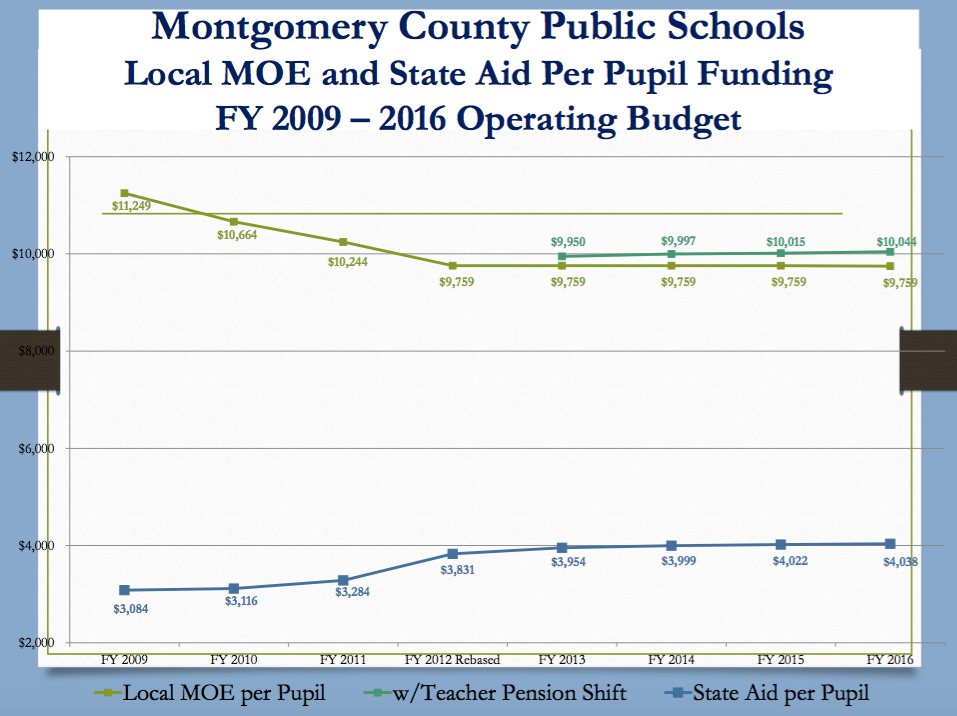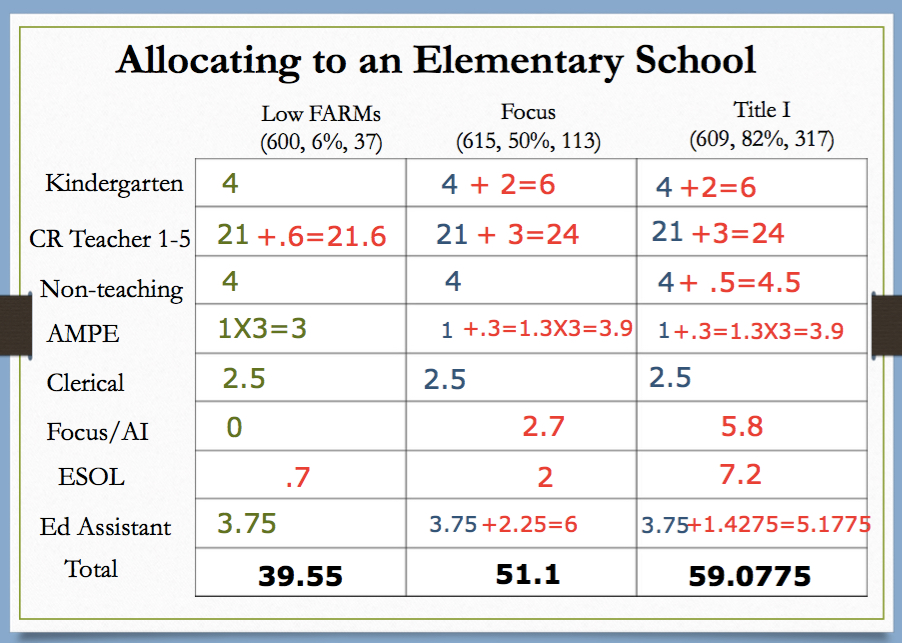The achievement gap between White and Asian students compared to their Latino and African-American counterparts has received increasing public attention. The County has a real interest in making sure all students perform well–not just because it’s right but also to assure that the County remains economically competitive. That’s not going to happen with an unskilled workforce.
Today, I thought I’d take a look at some of what Montgomery County Public Schools (MCPS) is already doing as part of its effort to make sure all kids have the skills to succeed. This is the first in what I hope will be an occasional series on public education. My thanks to Andrew Zuckerman, the Chief Operating Officer of MCPS, for providing so much of the information included here.
Choices in how we use our resources make a statement about what we value as a community. Traditionally, Montgomery County has been very supportive of MCPS, which accounts for roughly 50% of the County budget.
Impressively, despite enormous pressures due to tough economic times, the County has largely maintained that commitment. However, increases in the student population have nonetheless forced reductions in spending per pupil. The following graph shows the County contribution per pupil:
This one reveals the total spending per pupil with state aid:
Accordingly, it become all the more important that we use the money we have wisely, as is hardly a secret at MCPS. An examination of how MCPS directs it resources reveals that it is spending significantly more in those schools with more disadvantaged students.
The following graph reveals the teaching and staffing allocation to three different types of schools with similar numbers of students:
To help disentangle the argot, Title I schools have high percentages of low-income families and qualify for federal assistance via the Elementary and Secondary Education Act. In this Title I school, over one-half speak English as a second language and 82% receive free or reduced price lunches.
Focus schools receive extra attention from MCPS despite not meeting threshold for Title I schools. Eighteen percent of students in this Focus school speak English as a second language and 50% receive free or reduced price lunches.
Low FARM schools have few students receiving free or reduced price meals (read: more affluent). In the low FARM school in the example, just 6% receive free or reduced price meals and 6% speak English as a second language.
As the graph reveals, Title I schools have 59 teachers and staff members while Focus schools have 51. In contrast, the low FARM school has 39.5. The difference is due overwhelmingly to the allocation of additional teachers to Title I and Focus schools.
So even as we continue to discuss additional ways to close the achievement gap so that all students are performing as high as possible, we need to acknowledge that MCPS has directed meaningful resources towards this problem. That doesn’t mean it’s solved, doesn’t merit significant attention, or we don’t need to attack the problem in a variety of ways, but it also means that MCPS is taking real actions to address it and the gap in opportunity between more and less affluent areas of the County.



